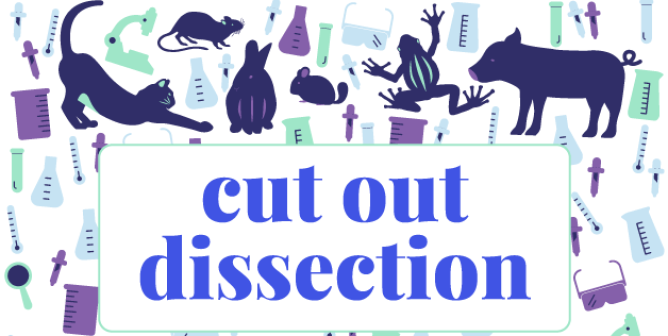The Dangers of Bringing Reptiles and Amphibians Into Your Classroom
Bringing animals into the classroom and using them as “pets” presents a plethora of problems: It teaches students the lesson that animals are nothing more than classroom tools, it can introduce allergens that affect students who have asthma and allergies, and it puts the animals at high risk for abuse and neglect.
Of course, this applies to reptiles and amphibians, who are sensitive animals with unique and sometimes extensive needs. But the risks involved with bringing them into the classroom can, in some ways, be even higher than with other animals.
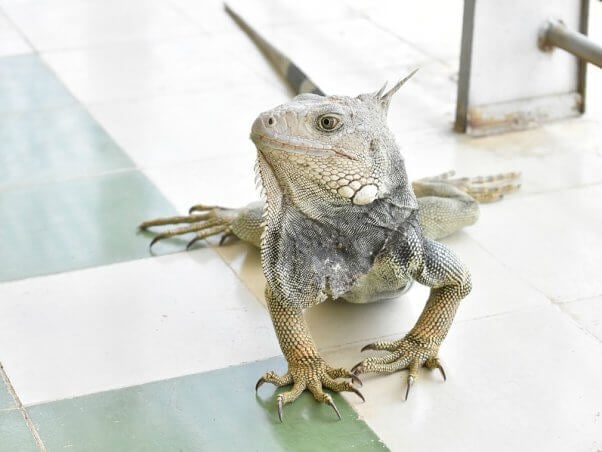
Don’t Be Misled—Reptiles Are a Huge Responsibility
Caring for reptiles is a massive commitment of time, space, and money that few schools can ever provide. They need proper temperature and humidity controls and have requirements for specific light and dark cycles that are virtually impossible to maintain in a classroom. Backup power is necessary to keep a constant temperature in the event of a power failure. The costs for food, an enclosure, lighting, and vet bills can total hundreds of dollars per year.
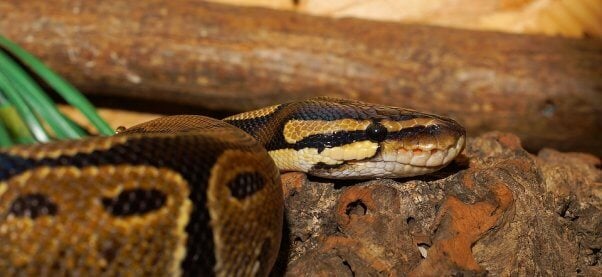
They can be a very long-term commitment, too. Consider the following facts:
- A properly cared for iguana can live more than 20 years and grow to be more than 6 feet long.
- Snakes can live for decades and grow to lengths in excess of 5 feet, depending on their species. Many teachers end up scrambling to find new homes for them once they become too large.
- Geckos can often live up to 30 years and require a very particular environment without the slightest variance in temperature.
- The average lifespan of an aquatic turtle is 25 years, while a land tortoise has one of the longest life spans of any animal—they can live to be well over 100 years old.
Salmonella: Reptiles Spread This Bacteria to Children
Seventy thousand people in the U.S. contract salmonellosis from direct or indirect contact with reptiles and amphibians every year—and children are particularly at risk of serious illness or death from an infection. Even animals who appear to be healthy may be carrying the bacteria. The risk is so high, in fact, that the Centers for Disease Control and Prevention recommends that any household with young children avoid keeping turtles or other reptiles as animal companions.
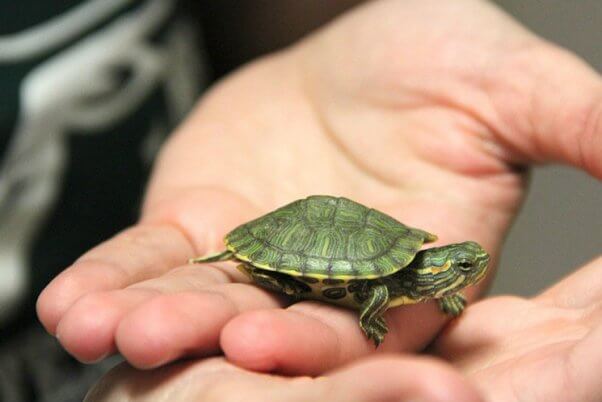
Consider the following examples of salmonella infections linked to contact with animals:
- A man in Louisville, Kentucky, and his three children all contracted salmonella infections from the children’s classroom lizards after they volunteered to care for them and brought them home.
- An outbreak in 2005 and 2006 among youth in Minnesota was traced to “pet” snakes who were being kept in a junior high school classroom.
- A massive outbreak in 2011—which spanned more than half the U.S. and caused more than 240 people to become ill—was associated with African dwarf frogs (who are commonly kept as classroom “pets”) and their water and habitat. Most of those who were infected were younger than 10 years old.
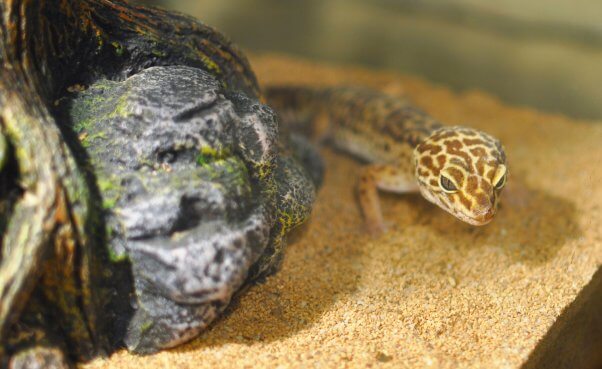
And reptiles aren’t the only carriers of the salmonella bacteria—the mice who are fed to some carnivorous reptiles, such as some snakes, can carry it, too. In the outbreak in Minnesota, the same strain of salmonella that was found on a snake was also found in the vacuum-packed rodents who were being purchased online to feed the snakes.
Reptiles Don’t Want to Suffer in Your Classroom
Reptiles such as snakes shun contact with humans—and being held, touched, petted, or passed around is stressful and leaves them prone to illness and injury. And because reptiles don’t whine, yelp, or flinch, their injuries often go unnoticed and, therefore, untreated.
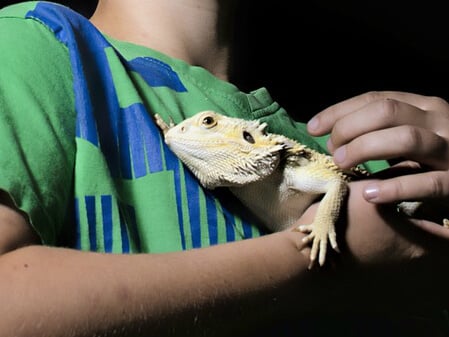
A study published by the U.K.’s Royal Society of Biology found that at least 75 percent of pet snakes, lizards, tortoises, and turtles die within one year in a human home—and it’s believed that most of these newly acquired animals die from stress related to captivity.
And they don’t die just from stress—they are also at a high risk for abuse and neglect. PETA has come across cases of classroom “pets” being abused, unintentionally neglected, and also creating problems of their own in schools—including an African dwarf frog who died after apparently being overfed by a kindergarten student, a ball python who escaped from her enclosure in a first-grade classroom after a teacher forgot to clip the cover closed, a snake who was stolen from a classroom enclosure and cooked to death in a school microwave, a ball python who froze to death after being left in a high school classroom, a turtle who was seriously injured after his toes were pinched off by a 9-year-old student who had volunteered to bring him home for the weekend, a seemingly submissive iguana who bit off the tip of a student’s finger, and more.
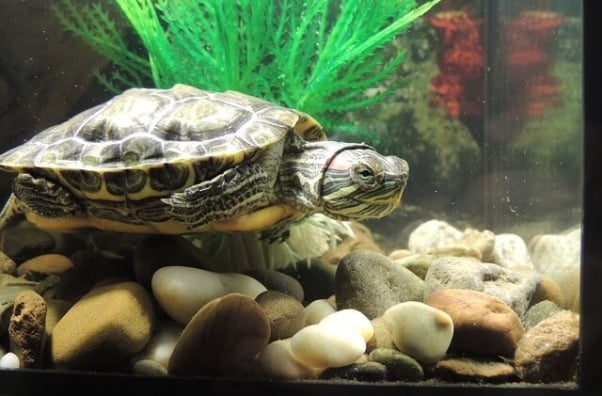
Do You Want to Support an Inherently Cruel Industry?
Purchasing reptiles who were captured in their natural habitat encourages the removal of wildlife from delicate ecosystems—something that no kind teacher would ever support. And buying captive-bred animals only encourages breeders to replenish their stock, contributing to a cruel cycle in which thousands of animals suffer every year.
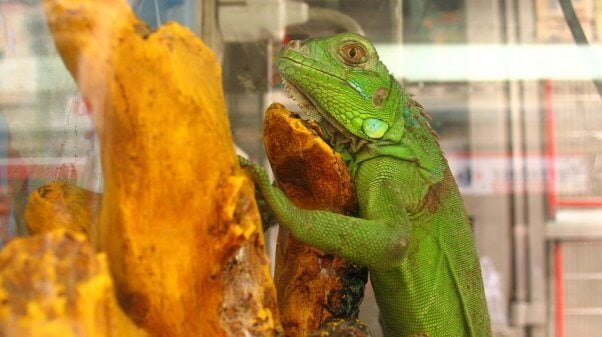
It’s also a harsh fact of life that most reptiles are carnivores—do you really want your freezer to be full of the dead animals you’ll need to feed to the reptiles? Snakes, for example, eat rats, mice, and crickets—you must purchase them all at a pet store, which, in turn, supports the awful pet trade and the cycle of captivity and cruelty. Animals eat other animals in the wild, but there’s no reason to keep one whose care requires you to bolster the cruel pet industry.
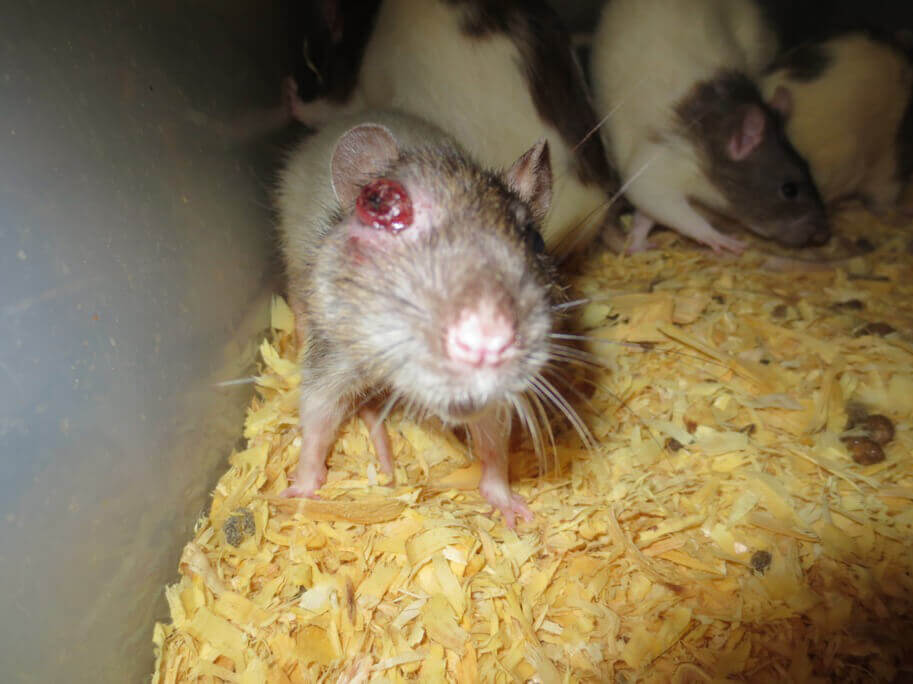
PETA’s investigations of pet-trade suppliers have documented filth, crowding, deprivation, stressful environments, and other types of cruelty to animals over and over again. In an investigation of Global Captive Breeders (GCB), most of the thousands of rats who were kept at the facility were what the pet-trade industry refers to as “feeder” animals—bred and sold to be fed to snakes and other captive carnivorous reptiles who are kept as “pets.” They were doomed to die terrifying, painful deaths at GCB and endured filthy conditions and other forms of misery their entire lives.
*****
All reptiles and amphibians require a lot of work and maintenance and present health risks that are especially high for children—and they don’t deserve to suffer for the sake of being your classroom decoration. Foster true respect for animals in your students (and look out for their health and safety) by saying no to reptiles, amphibians, and any other animals in your classroom.

